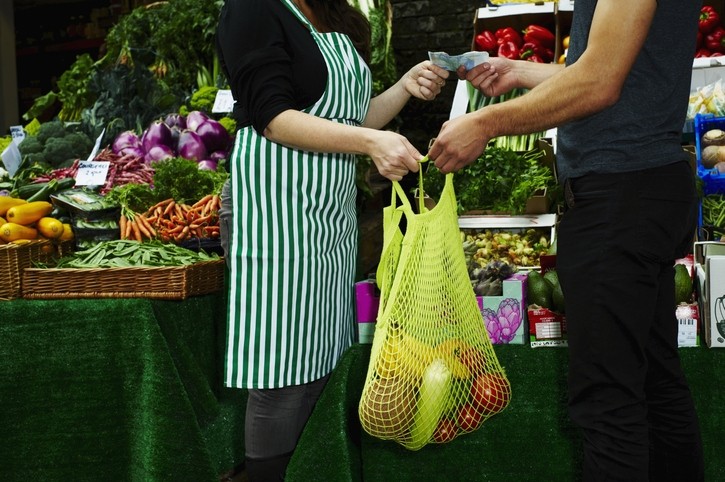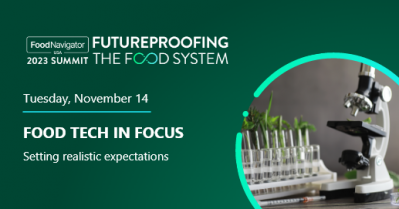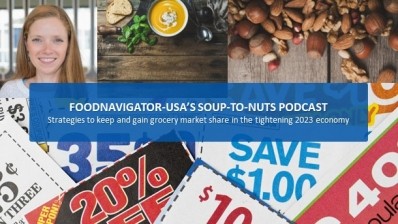FMI: Inflation, higher prices didn’t dent produce sales totals in 2022, but impacted volume sold

Sales of fresh produce reached $74.5 billion in 2022, up nearly 5% from 2021 and up 19% from 2019, while the volume of products sold was down 4.2% from 2021 to 40.8 billion pounds, according to FMI - The Food Industry Association’s recent Power of Produce 2023 report.
The food industry may reach more customers in the coming year by focusing on value-added produce, which are products that have undergone at least one preparation step, such as cleaned and cut products sold on trays with plastic overwrap.
Value-added, easier-to-prepare fruits and vegetables are resonating with time-crunched consumers, with 78% and 67% saying they “sometimes to always” purchase value-added vegetables and fruits, respectively.
Moreover, 68% say they wish stores carried a larger selection for pre-cut and washed items, signaling an opportunity for retailers and producers.
“Shoppers are searching for deals, but also willing to pay more for convenience – like pre-cut and washed products,” said Rick Stein, vice president for fresh foods at FMI. “This shows how complicated the consumer decision process is. On one hand, shoppers are saying price is important, but when it comes to convenience, they are willing to pay.”
FMI surveyed nearly 1,500 grocery shoppers in November 2022 to explore their perceptions and behaviors on fresh fruit and vegetable shopping, preparation and consumption for the report.
Price and value both play a role
Consumers in 2022 looked for sales and specials to get more fresh fruits and vegetables for their money, with 26% of produce shoppers ranking price as the top factor when buying fresh fruit and vegetables and 89% saying they are somewhat or very concerned about the prices of fresh produce.
Both sales and volume of fresh produce sold in 2022 were above 2019 levels, “highlighting the continuing trend of consumers choosing fresh and healthy options despite higher prices.”
But pricing alone is not the sole factor shoppers use in determining what to buy, as consumers are also focusing on value as well as claims such as seasonal, local and grown in the USA, according to FMI.
Product appearance also plays a role in the “produce purchasing decision tree,” with 18% saying it was the top factor when buying fresh fruit and vegetables.
FMI suggests that producers and retailers should emphasize and help define good value to consumers.
“Highlight affordability through promotion when supply chain allows by embracing creative approaches such as shorter durations or cross-departmental package deals and by personalizing promotions to enhance relevance and engagement,” the trade group advises.
Fresh produce consumption frequency flat
According to the report, one-third of Americans typically eat fresh produce daily, and 58% say they eat fresh produce four to five days a week, in line with figures from 2021.
“Despite their consumption frequency being unchanged, shoppers are buying less to manage their fresh produce spend,” FMI says. “Managing produce spending includes a shift to fresh produce with longer shelf-life as well as shifts to more frozen and canned.”
The trade group suggests that producers can focus on shelf-life initiatives to help produce last longer as consumers look to cut down on food waste, with approximately 60% saying fruit and vegetables going bad before they can be eaten is an issue.
Meanwhile, 72% of shoppers say they “always or usually” have fresh vegetables with dinner, signaling an opportunity for marketers to add to sales by promoting different “consumption occasions” for fruits and vegetables, citing breakfast, snacks and dessert as “prime opportunities.”
Organic volume dips, but dedicated organic customers increase
Meanwhile, consumers trended away from organic produce in 2022, with volume declining 2.5% following several years of growth.
FMI attributed the drop to the 25% of shoppers who said they are buying cheaper fresh produce given inflation, and suggested that organic produce sales may be pressured again in 2023.
However, many “core” organic customers expect to increase their organic produce purchases, especially in urban stores with a younger consumer base, where “more variety and organic assortment are key to enhanced engagement.”
Those core organic customers, who say they purchased almost all or only organic fruits and vegetables last year, represent 25% of all consumers, up 5% from 2021.
Shoppers searching for nutrition information
FMI’s report also found that consumers are seeking more nutrition information for produce, pointing to the potential opportunity for producers or retailers to include that at point-of-sale or on packaging.
For instance, one-third of shoppers said they want information on serving sizes and recommended daily totals, while nearly half said they want to learn about nutrition content and health benefits.
“Current portion and nutrition knowledge is higher among those who frequently consume fresh produce - underscoring the importance of helping consumers make educated shopping decisions at the grocery store,” FMI says.
Providing portion guidance, as well as ideas for different meal occasions, can also create more awareness of produce consumption among consumers and boost engagement.
In addition, marketers can offer tips for how consumers can complement restaurant or retail foodservice meals with store-bought fresh produce, FMI suggests, calling it a “second-chance sales win for retail.”
Ninety-four percent of consumers order restaurant food for takeout or delivery, and 61% occasionally or frequently add store-bought fresh produce to their meals.
“Better understanding of portion sizes and nutrition, better prices and promotions and complementing restaurant meals are prime ways to help consumers increase their consumption of fresh fruits and vegetables,” the trade group says.

















